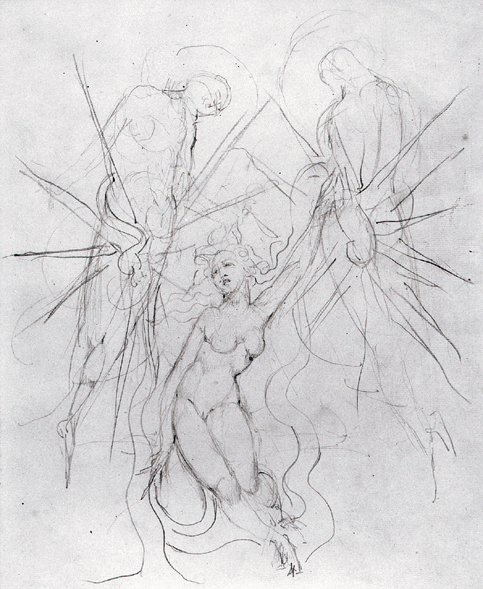Image Details

National Gallery of Art, Washington, DC
Two sons of God sexually attack a daughter of man in William Blake’s pencil drawing, “Two Angels Descending” (c. 1822). Blake based his vision on the pseudepigraphic Book of Enoch’s rendering of the Genesis account of the sons of God and the daughters of men: “Come, let us select wives from the progeny of men, and let us beget children…Then they took wives, each choosing for himself” (1 Enoch 6.2, 7.1).
In Genesis the angels’ selection of mortal women as wives is without sin, and culpability is not an issue (Genesis 6:1–2, 4). First Enoch, however, finds the women guilty of producing monstrous, destructive offspring—the Nephilim. First Enoch reproaches the daughters of men for introducing sin into the world, while exculpating the two hundred angels who assaulted them. As Greiner notes, from Genesis to Enoch the portrayal of women and sexual relations shifts dramatically. It is this evolving perception of women, she argues, that has influenced how Eve, and women in general, have been viewed for the past 20 centuries.
